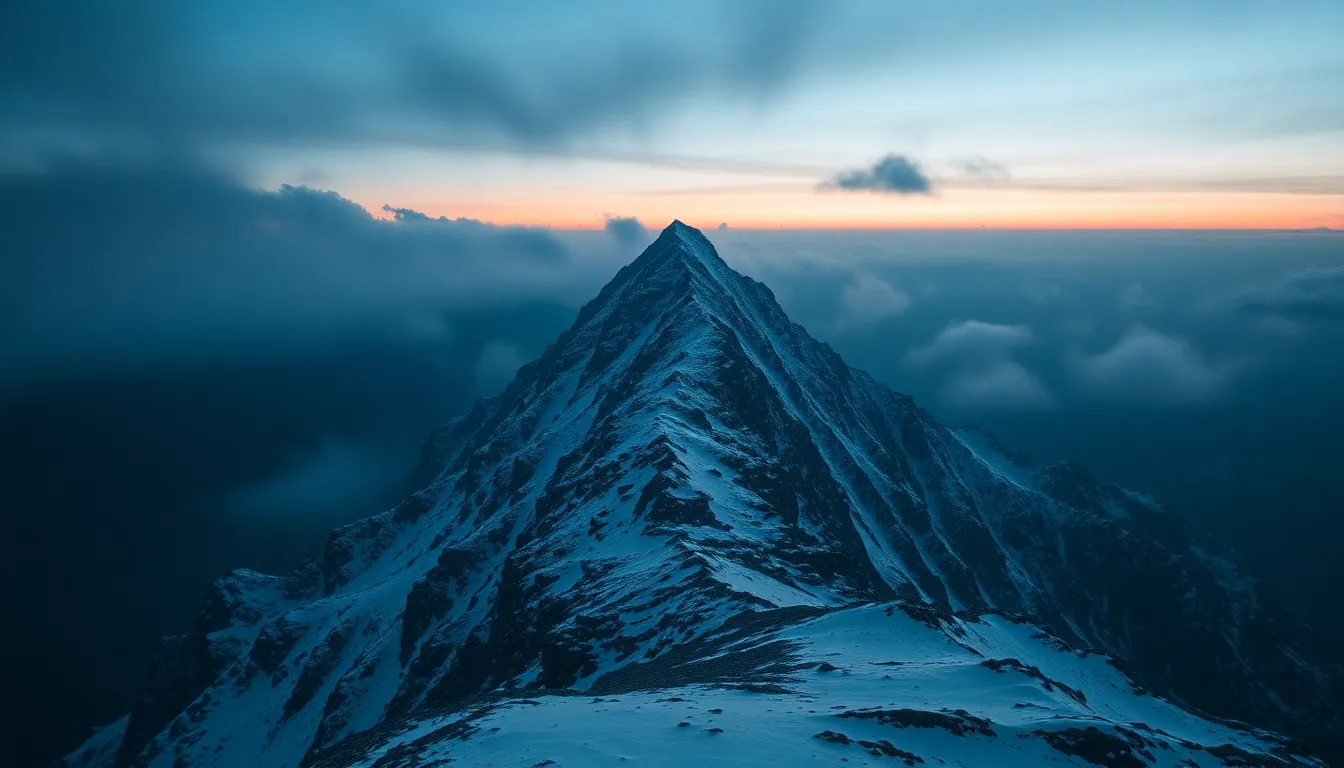The Summit of Sorrow: Legends of Tragedy and Loss in the Mountains
I. Introduction
The majesty of mountains captivates the human spirit, drawing adventurers and nature enthusiasts alike to their lofty peaks. Yet, these towering giants are not just symbols of beauty; they are also places of danger and challenge. The allure of the mountains often disguises the tragic stories that lie within their shadows, tales of loss that resonate across cultures and time. This article delves into the legends and narratives that embody sorrow in the mountains, exploring how these landscapes have become a backdrop for both awe and despair.
II. The Allure of the Mountains: A Double-Edged Sword
Mountains have held significant importance in human culture, often seen as sacred spaces, sources of inspiration, and testaments to human endurance. However, the relationship between people and mountains is paradoxical, as they embody both adventure and peril.
- Historical Significance: Mountains have been revered in various cultures as the homes of deities, places of pilgrimage, and sites of wisdom.
- Adventure vs. Peril: Climbing a mountain offers exhilarating challenges, yet it can lead to tragic consequences such as accidents and fatalities.
- Psychological Impact: The vastness and isolation of mountainous environments can evoke powerful emotions, influencing explorers’ mental states.
III. Notable Legends of Lost Expeditions
Throughout history, many expeditions have ended in tragedy, leaving behind legacies shrouded in mystery and sorrow. Some of the most notable legends include:
- The 1924 Everest Expedition: The disappearance of George Mallory and Andrew Irvine on their attempt to summit Everest has puzzled climbers and historians for decades. Did they reach the top before meeting their fate?
- The 1950 K2 Expedition: This expedition ended in disaster, with several climbers losing their lives in the treacherous conditions of K2, known for its harsh weather and technical challenges.
- Modern-Day Tales: Stories of climbers lost in the unforgiving terrains of the Himalayas and Andes continue to emerge, highlighting the risks that accompany high-altitude adventures.
IV. Folklore and Myths of Mountain Spirits
Mountains are often steeped in folklore, with many cultures crafting legends about the spirits and deities that inhabit these majestic landscapes.
- Regional Myths: From the Hindu gods in the Himalayas to the spirits of the Andes, many cultures have their own mountain guardians.
- Guardians of the Mountains: These spirits are believed to protect climbers and locals, sometimes intervening in tragic events to either save or claim lives.
- Cultural Interpretations: Loss and tragedy in mountain folklore often reflect broader themes of human struggle and the respect owed to nature.
V. The Role of Nature in Human Tragedy
The mountains are not only a stage for human ambition but also the source of nature’s fury. Natural disasters can have devastating impacts on climbers and surrounding communities.
- Avalanches and Landslides: These sudden events can obliterate entire groups of climbers, leaving behind only silence and sorrow.
- Famous Natural Disasters: Historical events like the 1970 Huascarán avalanche in Peru have claimed countless lives and reshaped communities.
- Survival Stories: Tales of those who have survived such disasters often intertwine with stories of loss, leading to a complex emotional tapestry.
VI. The Emotional Toll of Mountain Climbing
The psychological effects of grief and loss in the climbing community are profound, often leaving lasting scars on those who face such tragedies.
- Psychological Effects: Climbers suffering the loss of friends or mentors may experience intense grief, leading to anxiety or depression.
- Personal Accounts: Many climbers share their harrowing experiences of loss, illustrating the emotional burden carried long after a tragedy.
- Community Responses: The climbing community often comes together in the wake of tragedy, fostering support networks to help members cope with grief.
VII. Case Studies of Iconic Mountains and Their Legends
Some mountains are notorious for their tragic tales, each with its own stories that reflect the perils of climbing.
- The Matterhorn: Known for its steep faces and unpredictable weather, the Matterhorn has seen numerous failed climbs and tragedies, earning it a fearsome reputation.
- Annapurna: Often referred to as the deadliest mountain, Annapurna’s harsh conditions have led to countless losses, making it a focal point for climbers’ fears.
- Mount Fuji: This iconic peak is steeped in legends of loss and is considered a spiritual site, where many have climbed in remembrance of loved ones.
VIII. The Impact of Technology on Safety and Tragedy
Advancements in technology have transformed the landscape of mountain climbing, impacting both safety and the narrative of tragedies.
- Advances in Gear: Modern climbing equipment has significantly improved safety standards, helping climbers better prepare for harsh conditions.
- Changing Narratives: While technology has reduced some risks, it has also led to a false sense of security, prompting some climbers to take unnecessary risks.
- Ethical Considerations: The balance between adventure and safety raises questions about risk-taking and responsibility in modern expeditions.
IX. Commemoration and Legacy of Those Lost
Honoring the memory of climbers who have perished in the mountains is a vital part of the climbing community’s culture.
- Memorials and Monuments: Many climbers are commemorated through memorials at the base of peaks or in climbing areas, serving as reminders of their courage.
- The Role of Storytelling: Sharing the stories of those lost in the mountains keeps their memories alive, fostering a sense of connection and respect among climbers.
X. Conclusion
The mountains stand as both a testament to human resilience and a reminder of nature’s unpredictable power. The legends of tragedy and loss that emerge from these majestic landscapes enrich our understanding of the risks and rewards of mountain climbing. As we continue to explore these heights, it is essential to acknowledge and honor the stories of those who have faced the ultimate sacrifice in their pursuit of adventure.



